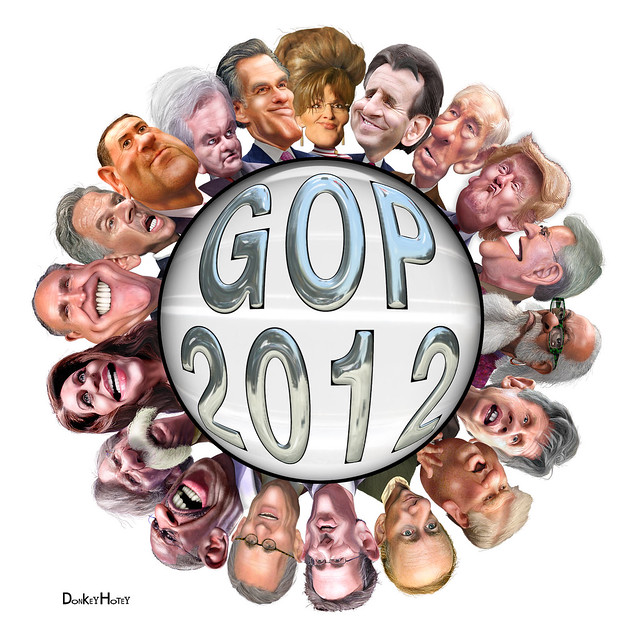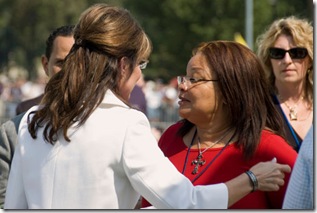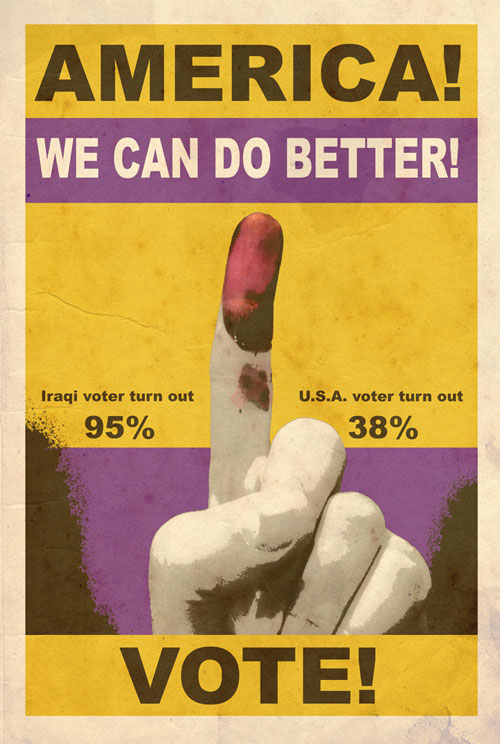By: Heather Gass – AskMarion
Over the past few years I and many others in the Bay Area have been fighting against a plan that will socially reengineer our lives referred to as the One Bay Area Plan. It will transform the lives of over 9 million people and towns in 9 counties over the next 25 to 30 years into high density stack and pack housing next to mass transit all in the name of saving the planet and reducing GHGs (Green House Gases). Private property outside of city and county urban limit lines will be highly restricted and/or off limits as part of the first ever statewide re-wilding and corridor system in California is created. The crazy thing is no one seems to know about it. Bay Area residents and taxpayers have been kept out of the process. Most have never heard of the regional unelected bodies pushing these plans or the legislation we are now being asked to follow, but all will be affected by it in some way in the near future.
Although I will be focusing on the regional plan in the Bay Area this is happening all over the state and country under different names so don’t feel left out. I have done thousands of hours of research over the past few years and discovered the genesis of these plans and who is behind it. I am hoping that by providing the historical timeline and links to back up my findings that it will be clear that these plans are were not being pushed by the people of the Bay Area, the local municipalities or by state level mandates. These plans were hatched long before the state legislation was enacted by a small group of NGO’s (Non-Governmental Organizations), stakeholders, foundations and regional unelected bodies funded with tax payer money.
There are three main pieces of legislation that are being followed in California to complete the transformation and socially re-engineer our lives; SB375 (2008 Sustainable Communities Strategy), AB32 (2006 Global Warming Act) and AB2785 (2010 California Essential Habitat Connectivity Map). All of these bills were signed into law by Governor Schwarzenegger. The global warming bill calls for a reduction in GHGs to 1990 levels by 2020. The SB375 bill links land use to transportation and specifies the majority of future construction be compact, high density, low income housing next to mass transit in order to force Californians out of their cars and single family homes to ostensibly reduce GHGs. AB2785 identifies (maps) an animal and vegetation corridor system throughout California, connecting large blocks of government regulated land through private property that must be taken in some way to complete the California Wildlands corridors. This map is most egregious in that it casually illustrates (with a sliding scale of less to more cost) how much it would cost our government (in terms of dollars, conservation easements, eminent domain, zoning to open space, etc) to take the land from private individuals in order to complete this map. California planning organizations are expected to use it in their planning for land use and transportation process. What people don’t realize is that this map is NOT about preserving land (Open Space) for the animals and plants. These land masses that are being set aside are being incorporated into giant land trusts for the purpose of selling carbon credits in the trillion dollar Cap n’ Trade scheme that recently started in this state. A few large land trusts and foundations will be the beneficiaries of this giant piggy bank. Here’s a list of land banks (http://www.dfg.ca.gov/habcon/conplan/mitbank/catalogue/). The CARB board will be giving many of the credits away to preferred corporations and to entice cooperation in the program. This is a fraudulent pay to play scheme and giant land grab not an environmental initiative.
The few, regular citizens, who have found out about the One Bay Area plan were horrified and attended workshops and hearings in an attempt to stop this plan from being adopted. Where did this plan come from? And why are unelected regional agencies dictating how and where the people of the Bay Area will live in the future?
Over the years the two main bodies pushing this plan MTC (Metropolitan Transportation Commission) and ABAG (Association of Bay Area Governments) have pointed the blame at either local jurisdictions or at state legislators as the responsible parties for this plan. At times they claimed this was an organic, bottom up plan that the local municipalities want and were asking them to implement. Then on other occasions they claimed they were only following state level mandates and that if we had a problem with this plan we should be taking it up with the legislators who voted for the bills. The truth is ABAG and MTC were behind this plan way before the legislation was enacted and have been quietly involved in the forming of this plan for almost 20 years and if you include international connections it is even longer (See U.C. Berkeley PhD. Judith Innes White Paper). ABAG led the effort and along with other agencies they engaged in backroom secret meetings, formed international alliances, regional compacts with stakeholders and NGOs in an effort to reach their goal of transforming our cities and towns into the United Nations vision of Sustainable Communities ultimately leading to the passage of AB32 (2006), SB375 (2008) and AB2785 (2010) legislation that codified this agenda in California. The following timeline will illustrate how this so-called regional plan came about and who is behind it. You will learn, as I did, that this plan is not a grassroots effort and was not originated at the state level. It is an international plan from the United Nations and is referred to globally as Agenda21 Sustainable Development.
These regional agencies are unconstitutional and the elected officials appointed to them have in my opinion violated Article 1, Section 10 of the U.S. Constitution by joining an international alliance with ICLEI and should be at the very least investigated and/or abolished.
I have included links throughout so you can check the facts for yourself. This plan is being duplicated all over the country and the world, but the Bay Area is one of the four initial pilot programs within the U.S. The pilot areas were Denver , Atlanta , Chicago and the Bay Area. In my research I found a white paper about the Bay Area Alliance written by Judith Innes a PhD from UC Berkeley (white paper “Getting Serious about the Three E’s”). She followed the alliance process from 2004 to 2007 and validates my findings. She points out how flawed the process was with virtually no experts being used to prepare data and reports and how the stakeholder workshops were misleading and outcomes were controlled and predetermined.
1987 – The term “Sustainable Development” was adopted at the Brundtland Commission meeting in 1987 as part of the “Our Common Future” outcome document. The official definition of Sustainable Development is “development that meets the needs of the present without compromising the ability of future generations to meet their own needs.” The term Sustainable Development encompasses three main principles; Equity, Environment and Economy. Economy is the key word used to describe replacing free market principles with PPPs (Public Private Partnerships). The Environment is used as catalyst for change and Equity describes the social and environmental justice and the redistribution of wealth. Not equal justice. Social equity is the driving factor to alter the function of law to impose social requirements replacing individual rights.
1990 -The United Nations accredited NGO (Non-Governmental Organization) ICLEI (International Council for Local and Environmental Initiatives) was founded in order to establish Agenda 21 campaigns throughout the globe. The ICLEI Charter/Constitution defines a world congress of mayors and elected officials working together with ICLEI serving as the international agent representing the members of the world congress throughout the globe. ICLEI serves as liaison between local governments and international governments. ICLEI members pay dues and must explicitly adopt the ICLEI Constitution which follows the 16 principles of the Earth Charter and a model of global governance. This international membership by cities and counties violates Article 1, Section 10 of the United States Constitution “No State shall enter into any Treaty, Alliance , or Confederation… with a foreign power”. The ICLEI headquarters in North America is in Oakland , Ca. Assemblywoman Nancy Skinner founded ICLEI USA. ICLEI is responsible for injecting international climate, land use and other policies into local governments. Many cities, counties and regional bodies across the country are contracting with ICLEI.
1992 -UN Agenda21 Earth Summit hosted by Maurice Strong was held in Rio de Janeiro , Brazil . At this summit the term sustainable development was adopted as part of the global Agenda21 campaign. 178 nations pledged their support for Agenda21. President George Bush, Sr. signed on to this for the U.S. Although this is technically a non-binding soft law, since Congress did not ratify it, Agenda21 and Sustainable Development have been incorporated into every aspect of our government through Executive Orders, the EPA, ICLEI and other regulatory agencies, bodies, boards and commissions. (See also video: Nancy Pelosi sponsored H.Con.Res. 353 on Sustainable Development.)
1993 -President Clinton signs Executive Order 12852 creating the President’s Council for Sustainable Development affectively bypassing Congressional approval of Agenda21. This council was tasked with injecting Sustainable Development and Agenda21 into all levels of our government nationwide.
1996 - Richard Clarke, retired Chairman and CEO of PG&E and Michele Perrault, International V.P. of the Sierra club (both members of the President’s Council for Sustainable Development) present the idea of a regional sustainable development initiative to the ABAG general assembly and to other NGO’s and stakeholder groups.
- David Early, Urban Ecology publishes the Draft Blueprint for a Sustainable Bay Area— The Final Plan (1999) is the basis for the One Bay Area Plan.
1997 – ABAG and several dozen NGOs around the Bay Area sign a Compact forming the BAASC (Bay Area Alliance for Sustainable Communities) (See Compact for Sustainable Bay Area). This document specifically states that MTC and ABAG as well as other groups joined forces to implement a regional plan for a Sustainable Bay Area. The document states “It is founded on the principle of the Three Es of Sustainable Development – prosperous Economy, quality Environment, and social Equity.” It also states “The Bay Area Alliance adopted the definition of sustainable development endorsed by the United Nations’ World Commission on Environment and Development.” And goes on to clearly point out “The Bay Area Alliance also operates within an international context. The Earth Charter Initiative (www.earth-charter.org) is an outgrowth of the 1992 Earth Summit in Rio de Janeiro and has many principles similar to the visions and commitments contained in this Compact.” Sunne McPeak represented the Business (Economy) side of the Alliance . Sunne McPeak also served on the ABAG board, Bay Area Council and she oversaw the Department of Transportation (Caltrans), the Department of Housing and Community Development, the California Housing Finance Agency, the Department of Real Estate and many others. She was a key player in pushing the SB375 legislation behind the One Bay Area plan.
1999 – Five regional agencies MTC, ABAG, BAAQMD (Bay Area Air Quality Management District), BCDC (Bay Conservation and Development Commission) and RWQCD (Regional Water Quality Control Board) were working on Smart Growth Strategies
- The BAASC (Bay Area Alliance for Sustainability Communities) plans “Regional Livability Footprint” Project a preferred land use pattern that dictated where development could occur in the Bay Area
- These two groups merged creating the Smart Growth Strategy/Regional Livability Footprint Project
- The Bay Area region and the BAASC were selected as one of four regional pilots in the nation by the Partnership for Regional Livability, a consortium of major foundations and federal agencies dedicated to advancing sustainable development and smart growth.
– “Final Blueprint for a Sustainable Bay Area” is prepared by David Early of Urban Ecology (one of the original stakeholders in the Alliance ). David Early also founded DCE Planning, which currently consults with local cities and counties to ensure the implementation of the plan locally.
2000 – Assembly Speaker Robert Hertzberg launched SCOR (Speaker’s Commission on Regionalism) to promote regionalism and collaboration across California . Sunne McPeak representing the Bay Area Council and many of the BAASC, NGOs and stakeholders were part of this new group. The main purpose was to push for legislation institutionalizing regionalism throughout California . Sunne McPeak was also the ABAG President.
2001 – First Round of stakeholder workshops (approximately 1000 participants) from all 9 Bay Area counties. These meetings were mostly attended by ABAG and MTC officials, planners, developers and social / environmental justice advocates who were stakeholders in the BAASC.
2002 – Second Round of stakeholder workshops (approx. 1000 participants). Three Regional Scenarios are proposed (Central Cities, Network of Neighborhoods and Smarter Suburbs). The preferred scenario was Network of Neighborhoods. ABAG develops policy-based projections using the Smart Growth Scenario as a starting point.
- Publication of “Shaping Our Future” was the result of this coalition.
2003 – Executive Board adopts policy-based projections. Abandoning the trends based projection model used in the past. This approach forces development to occur based on the preferred land use and transportation scenario. MTC’s RTP (Regional Transportation Plan) is based on ABAG’s projections.
2005 – Governor Schwarzenegger passes Executive Order S-3-05 to reduce GHGs in California to 80% below 1990 levels by the year 2050.
2006 – AB32 legislation passed - calls for a reduction in GHGs to 1990 levels by 2020. CARB (California Air Resources Board) is appointed to oversee and monitor state level GHGs.
2007 – California Center for Regional Leadership hosts a meeting where, then Assembly Member 11th District DeSaulnier (co-author of SB375 with Darrell Steinberg) and Van Jones both speak about pushing regional legislation. (http://calregions.urbaninsight.com/regcivic/bln/20071126/index.html)
– SB375 legislation introduced (Assemblyman Mark DeSaulnier was one of the co-authors of SB375 with Assemblyman Darrell Steinberg). Mark DeSaulnier served on the following boards ABAG, MTC, CARB and BAAQMD (Bay Area Air Quality Management District) all proponents of this legislation.
2008 – SB375 legislation passed – Links land use to transportation. Directs regional agencies to create blueprints focusing development in PDAs (Priority Development Areas) next to mass transit for the purpose of reducing GHGs based on AB32 legislation.
2010 – AB2785 legislation passed – California Wildlands Act. The California Essential Habitat Connectivity report sponsored by DOT (Dept of Transportation), CalTrans and DFG (Dept of Fish and Game) shows many maps of the intended wildlife corridor system throughout California . This document is quietly being used by all planning, transportation agencies and commissions throughout California without the public’s knowledge.
2010–2012 - MTC/ABAG and a host of paid stakeholders and NGOs launch a series of public workshops. This time the public really engaged in opposition to the plan. Here’s a video of citizens opposing the plan at a workshop held in the County of Alameda in January of 2012.
As you can see the One Bay Area Plan did not originate as an organic bottom up plan, nor did it start with state level legislation. The President’s Council on Sustainable Development brought the idea to the regional agencies. The regional agencies then joined forces with local NGOs, stakeholders and foundations. The plan to socially re-engineer the Bay Area was going on long before the legislation (SB375, AB32 and AB2785) came to pass. This first ever regional plan in the Bay Area is scheduled to be adopted by the JPC (Joint Policy Committee) of MTC and ABAG in June of 2013 and when it does local jurisdictions will become virtually irrelevant. When money and power are concentrated at higher and higher levels by unelected regional boards bodies and commissions the end result is uncontrolled corruption. Someday the citizens of the Bay Area and California will wonder what happened to their beautiful unique towns and suburbs and go looking for answers. I’m hoping my research will give them the answers they seek and help them hold those behind this plan accountable.
AGENDA 21 - Book Review

I am a big fan of Glenn Beck’s books. His most recent, Agenda 21 by Glenn Beck with Harriet Parke, does not disappoint. The book is very well done, with a great plot and characters. It is realistic and disturbing. It’s a great read, but this first installment is a sobering look into what will transpire if we do not change course from the Progressive’s vision of our future.
The heroine of the story is Emmeline, who was about four years old when her parents were rounded up and placed in what can only be called an austere camp. A prison camp that is in the formation of a circle, where the homes are cinder block, with only a mat to sleep on and energy boards. Most were shot that would not go to the camps – some escaped and are referred to as the ‘shadow people.’ All tenants must earn their keep by producing energy for the collective. Producing children is required and the mother never holds her child. The state takes them immediately. Pairing is assigned. Nature and authority are the only things revered in this world. Meals are two cubes a day. Non-production is rewarded with death.
Think it can’t happen? Think again… Agenda 21 is very real as has been written about on this blog many times and it is spreading across the US. The Progressive Marxist elites will not stop until we are stacked and packed in hovels or trailers. They will take the land for themselves to create more wealth with carbon credits while we sweat and toil for them in ghettos.
Agenda 21 is a look into where this road leads. The ending of the book brings hope and definitely leaves it open for a sequel. I would recommend this book to everyone I know. You can’t fight your enemy, if you don’t know your enemy. And this is not about animals and plants; it’s about power, control and money.
A final note… Make sure you read the end of the book which gives research and facts on Agenda 21 and how to fight it in your communities. This is the fight of our lives. Take the fight to the Progressives, don’t wait until it comes to your doorstep.
You can get a copy of Agenda 21 at Amazon.com or at Glenn Beck’s web site. You should get several copies. I can’t wait for the sequel. Beck does it again with the help of Harriet Parke. Fantastic!!!





















No comments:
Post a Comment